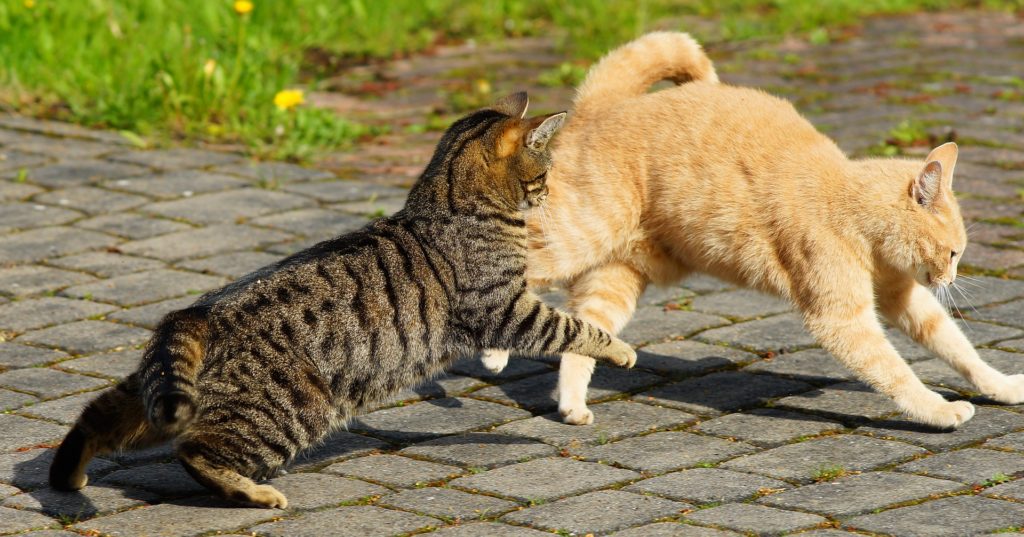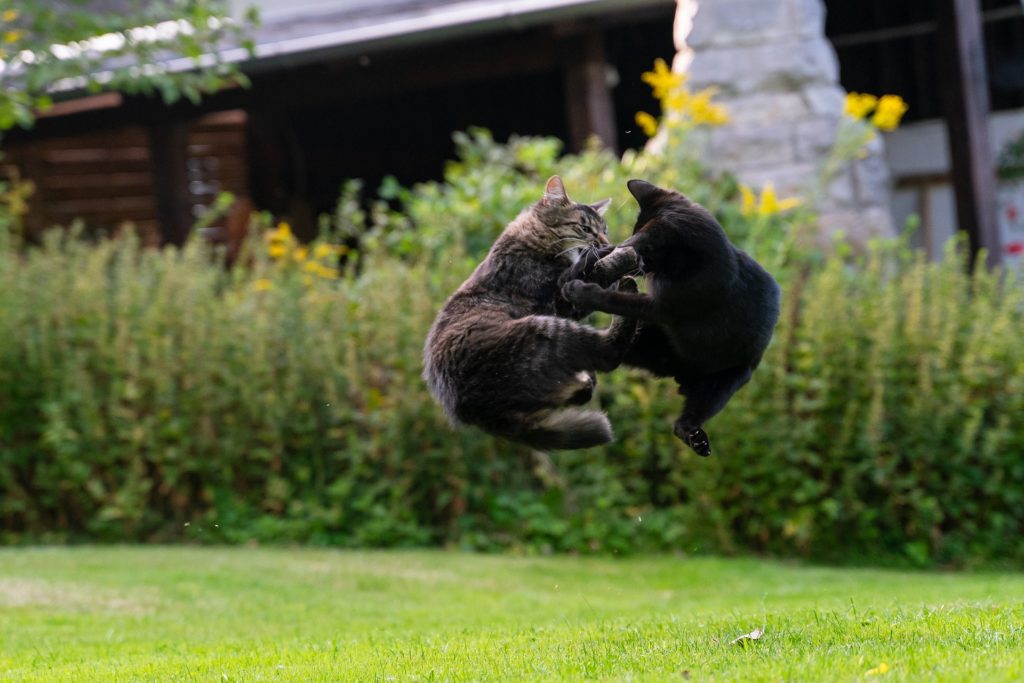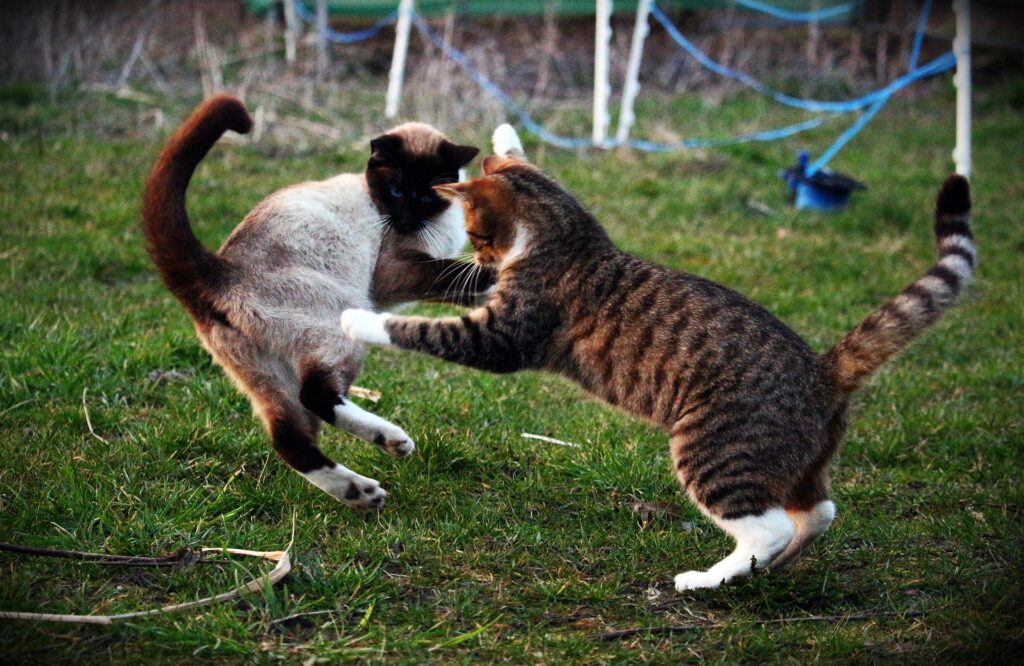Cats are true individualists among animals, they are independent and yet closely connected to their home and owner. Exactly this individuality, however, can sometimes lead to problems.
Most cats are kept as so-called “free roamers”, which means that they only live in the house part of the time and can roam freely in nature the rest of the time. However, cats do not roam the nature completely unhindered, because cats mark out a certain territory around their home.
Territory fights often arise in urban areas, where there are often new additions to the neighborhood and the existing territories must be fought out anew. You should only intervene in an emergency, if you notice the fights at all. The territories can be divided very differently, shared or overlapping.
Outdoor cats and their territory
The territories of domestic cats vary in size. Neutered house cats, for example, claim a smaller territory for themselves than intact conspecifics. Neutered outdoor cats are content with a radius of 500 meters around their home.

Intact house cats against it claim a precinct, which is larger around a multiple. There are also differences between “city cats” and “country cats”. While city cats must be content in areas densely populated by cats with a smaller precinct size, a “country cat” brings it quite once on a precinct size of stately 60,000 square meters area.
Outdoor cats and territorial fights
But what happens if there are already a large number of cats in the neighborhood and there is hardly a square meter free for your cat? The answer is simple: Your cat does what all cats would do in their situation – they fight!
Territory fights usually occur when there is not enough space for the cats, new cats have to stake out their territory or when the ranking has to be clarified anew.
Cats also try to avoid other cats, but territorial fights are still the order of the day. Usually these fights are limited to a short use of the claws, which is usually accompanied by hissing or growling. Possibly one or the other opponent loses a few tufts of fur, but nothing more happens.
It becomes problematic, if already – as already mentioned – too many cats live too close together or a new cat comes in the neighborhood. The “old neighbors” will very quickly start to drive away the “newcomer in the territory”.
Unfortunately, territorial fightings can also escalate. Especially males who want to improve their ranking, males who fight over a cat lady in heat or cat mothers do not know any friends in these moments and fight to the death. Serious injuries can be the result.
But even with cats that simply do not like each other, a clash of the two mortal enemies can lead to bloody confrontations, because a “subordination” of the weaker opponent, as with dogs, you will not find with cats.

Preventing territorial fights in outdoor cats – is that possible?
It is not possible to prevent territorial fights completely, you would have to keep your cat exclusively as an indoor cat. Cats get used to it quickly, however, you should think about a second cat as a company.
More information about outdoor and indoor cats can be found here:
- Cat scratches at wallpaper – what you can do
- When to let the cat out?
- Outdoor access for cat without cat flap – the best alternatives
Neutering is one way to at least reduce territorial fights. It protects against unwanted offspring and a resulting overpopulation and secondly, neutered cats move in a smaller radius around the house.
If you have your own garden, you could fence it cat-proof. This way your cat gets some free access, but other cats can’t cross her path. However, this method is expensive and time-consuming and a second cat should be acquired as company.
You should not intervene in a territorial fight, there is a high risk of injury to yourself. If possible and in case of escalation really necessary, i.e. to avoid worse injuries, you can empty a small bucket of water over the two bullies, this will end the fight quickly.
Territory fights lead to a regulated order of rank: the animals fight out once who is allowed to walk along where and when and mark out the borders of their territory. Therefore, a finished territory fight is positive for the future of your animal. Once the situation is settled, neighbors either get out of each other’s way or tolerate each other.
What to do in case of injuries?
If you notice that your cat has been involved in a fight, take a good look at it. Even if no injuries are visible at first glance, scratches or cracks may have occurred, which in the worst case can become infected.
If in doubt, always take your cat to the vet.
Down below we have summarized our most popular posts for you in a great overview:
- Why do cats groom themselves after eating?
- Cat does not like treats
- How do cats cool off in the summer?
- How to keep ants out of the cat food
- Cat only wants to eat
- Do cats like it warm or cold?
- Is there food envy in cats
- How do cats cool off in the summer?
- How long does open wet cat food keep?
- Strange cat comes again and again
Summary – cats fighting over territory
Cats divide their territories very differently. Between shared territories there are strictly defended territories of female velvet paws, sometimes overlapping and even territories that are shared by a whole group of cats and defended together.
Therefore, the associated rank fights are also highly individual. However, many encounters occur without territorial fights, the cats meet in the peripheral areas without quarrels.
Territorial fights occur far more frequently in urban, densely populated areas. The available space is already exactly divided among the animals living there. Since each has only a small radius as its territory, territorial fightings inevitably occur when new arrivals upset the order.
In territorial fights it becomes clear which rank which cat or which male cat has. Both sexes fight for their territory, males are said to do this more violently to give themselves a better status. This brings advantages with the cats of the environment.
If your cat has injuries after being outdoors, this could indicate cats fighting over territory. If your male or female cat is new to the area, the only thing that will help is to hang in there until they get along with each other. Also new arrivals of other owners of the area could mean territorial fights for your long-established cat.
Therefore, a short check is always necessary after the free walk: what impression does the animal make, does it behave normally and eat? Are there visible injuries – in case of doubt you should rather consult a vet.

